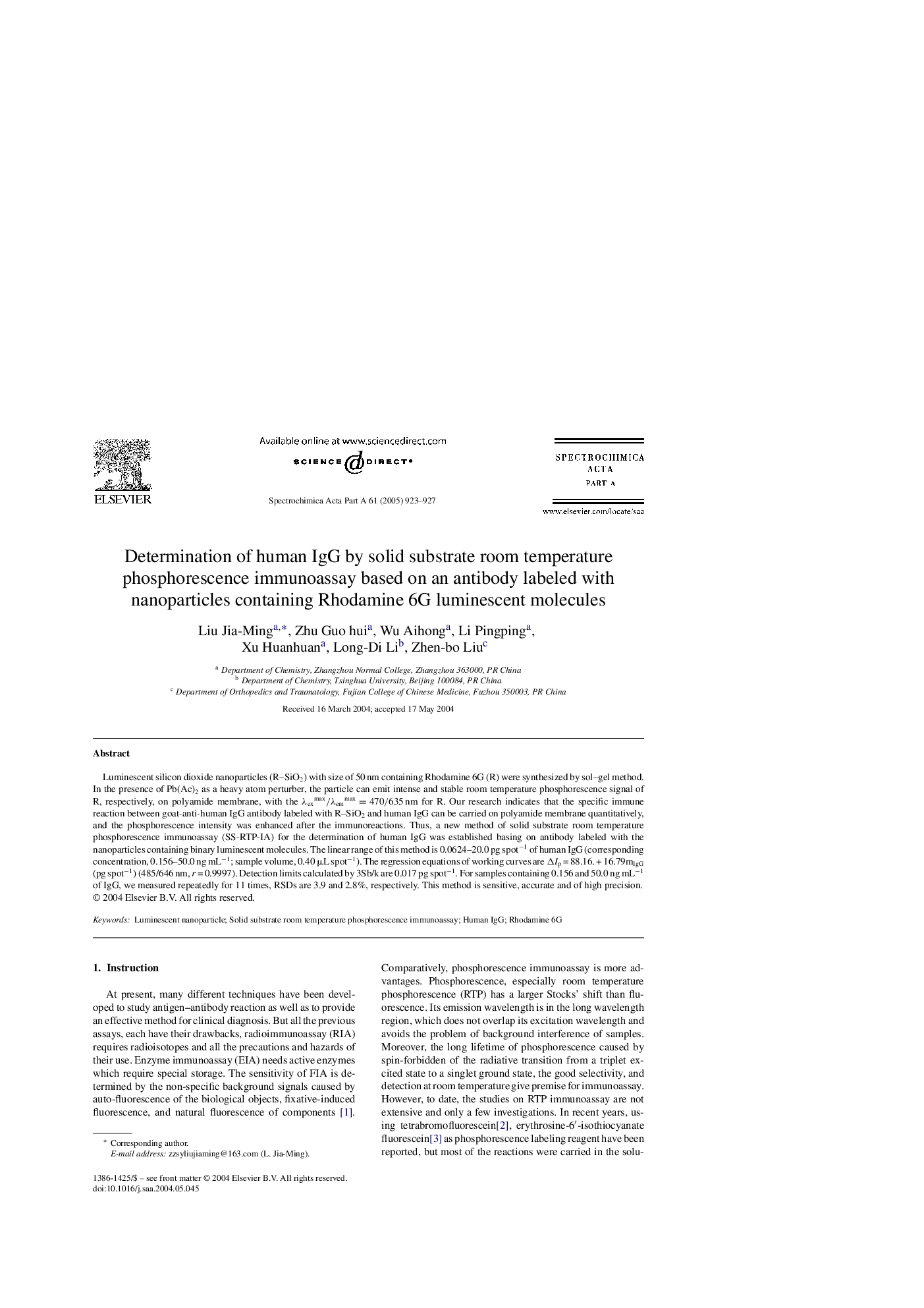| Article ID | Journal | Published Year | Pages | File Type |
|---|---|---|---|---|
| 10557882 | Spectrochimica Acta Part A: Molecular and Biomolecular Spectroscopy | 2005 | 5 Pages |
Abstract
Luminescent silicon dioxide nanoparticles (R-SiO2) with size of 50 nm containing Rhodamine 6G (R) were synthesized by sol-gel method. In the presence of Pb(Ac)2 as a heavy atom perturber, the particle can emit intense and stable room temperature phosphorescence signal of R, respectively, on polyamide membrane, with the λexmax/λemmax=470/635nm for R. Our research indicates that the specific immune reaction between goat-anti-human IgG antibody labeled with R-SiO2 and human IgG can be carried on polyamide membrane quantitatively, and the phosphorescence intensity was enhanced after the immunoreactions. Thus, a new method of solid substrate room temperature phosphorescence immunoassay (SS-RTP-IA) for the determination of human IgG was established basing on antibody labeled with the nanoparticles containing binary luminescent molecules. The linear range of this method is 0.0624-20.0 pg spotâ1 of human IgG (corresponding concentration, 0.156-50.0 ng mLâ1; sample volume, 0.40 μL spotâ1). The regression equations of working curves are ÎIp = 88.16. + 16.79mIgG (pg spotâ1) (485/646 nm, r = 0.9997). Detection limits calculated by 3Sb/k are 0.017 pg spotâ1. For samples containing 0.156 and 50.0 ng mLâ1 of IgG, we measured repeatedly for 11 times, RSDs are 3.9 and 2.8%, respectively. This method is sensitive, accurate and of high precision.
Related Topics
Physical Sciences and Engineering
Chemistry
Analytical Chemistry
Authors
Liu Jia-Ming, Zhu Guo hui, Wu Aihong, Li Pingping, Xu Huanhuan, Long-Di Li, Zhen-bo Liu,
